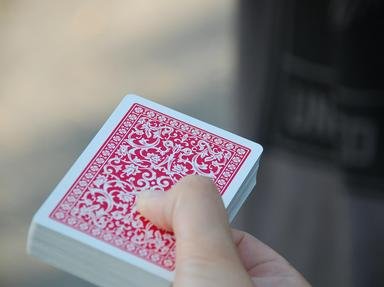
Cards on the Table: How Many Do You Need? Quiz
Card games are played all over the world with different rules, decks and numbers of cards. Can you figure out how many cards are used in each game?
An ordering quiz
by wellenbrecher.
Estimated time: 3 mins.
- Home
- »
- Quizzes
- »
- Hobbies Trivia
- »
- Games & Toys
- »
- Card Games